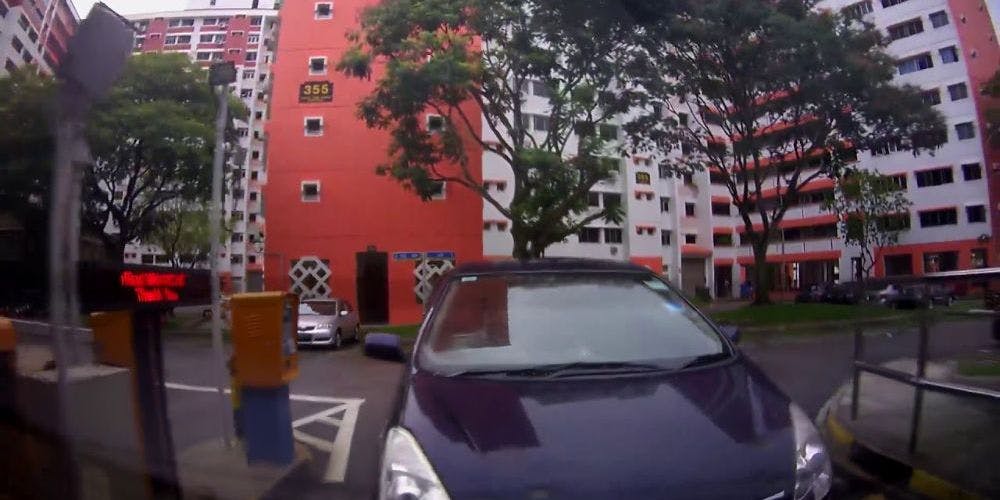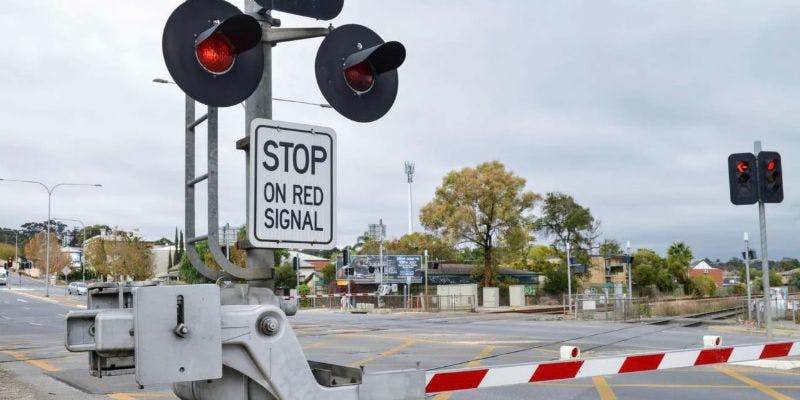Building Security: Prevent Tailgating

Tailgating comes in different forms. There’s the one that happens at high speed when a motorist drives their vehicle right up close behind the rear of the vehicle in front of theirs with little regard for theirs or other road user’s safety. There’s also the type that occurs at a much slower speed, in traffic, when drivers prevent “queue cutters” from cutting in front of them when sitting in traffic by closely following the vehicle in front of them. Both these types happen on the roads.
Though, away from roads, more precisely, in and around buildings and private property, tailgating is when one vehicle closely follows other into secured car parks, such as those found behind electric gates at shopping malls and office or apartment buildings, with the intention of unlawfully gaining access to the inside of the building without having to stop and present one’s identification or valid parking ticket.
This underhanded tactic can also be perpetrated by foot when an intruder tries to access a building by following a resident, worker or approved visitor in through the entrance before the entrance door has closed and locked shut.
The objective of tailgating is to enter a building by finding a person that is already supposed to be there and allowing themselves in while the doors are still open, thus bypassing any intrusion alarm and obtaining access to your building. This trick can also be used from one secure area to another that is secured with the intent of entering and exiting. This is a passive scam as no physical force is required for this to occur and little risk of being caught.

Reasons Given for Tailgating
- A person or a group is tailgating because they are ignorant of the building’s security precautions. They don’t realise that the cameras, motion detectors and alarms are in place.
- The person tailgating believes that they have a legitimate reason to enter the building. They are not paying attention to signs and other markers on the doors that say that they have gone past a security zone. They may be holding an envelope or similar mail item.
- The person tailgating has been told by someone else who is fully aware of their surroundings, about the weak points in the building’s security system and takes advantage of them.
- The person tailgating has a physical ailment that they wish to remain hidden from security people. They may be in a wheelchair and may not want to make an issue of this detail. The same could be said for anyone with any disability, whether visible or not, entering a building.
Criminal Reasons for Tailgating
- To wait for the thier ex to enter the building, grab people in the lobby, force them up to the apartment, to commit any range of serious crimes such as aggravated assault, rape, or murder. An ex-partner with an Apprehended Violence Order (AVO) out on them, acquaintance or a total stranger who have been studying their victim from afar are possible perpetrators.
- To avoid paying for parking facilities, or to get access into a building that is over one hour’s parking, and then sneak out again using the same motor vehicle.
- To commit trespass on the property and remain there seeking shelter as long as they can or vandalise the property, stealing water and electricity from the building.
- They may be there for illegal reasons, such as drug dealing or vandalism, or trying to connect to the network in a building that is not supposed to be connected, trying to steal data, water and electricity, or attempting other crimes from within the secure area.
- To sneak into underground car parks, usually when the security gates are triggered by a resident to drive in or out. Bicycles and tools are the items most commonly stolen by thieves.
- Tailgating by foot in the workplace can be a serious risk to corporate secrets, intellectual property and high-level data.

How to Prevent Tailgating
The challenge with building security is that the security solutions must be transparent and cannot be overbearing. This is the resident’s home or place of work, so we do not want them to feel like they are living in a prison or unsafe building.
With that in mind, here are some points on how to prevent this tailgating:
- The best place to start is at the building’s perimeter. Barriers, electric gates, or personnel can be placed to stop unauthorised vehicles from passing.
- Wait for the security gate to close completely before driving on.
- Watch out for suspicious people lurking near a secure gate, door, elevator or stairway.
- Ask the strata management to set up a code word to only be used by residents, and ensure there are CCTV cameras in the common areas.
- Place all sensors in strategic locations.
- Employ guards and guard stations. Assigning a security presence is usually the most effective, but it is often prohibitively expensive. The upfront costs associated with building a guard station, staffing the station 24/7 can easily exceed $100,000 per year. The other challenge is that it can be slow. Manually verifying permissions and calling residents to confirm guests can lead to a traffic jam at your gate.
- Those seeking an alternative to a fully staffed guard station should consider a better tailgating solution of a gate intercom system and upgrade in security equipment (i.e. cameras, turnstiles).
- Examine equipment that would allow the users to react in a timely manner. While there are devices like turnstiles that will restrict access, this equipment is not usually conducive to a residential or office setting. The installation of such technology has a factory or commercial facility feel and does not work well with residents or office workers.
- Education and procedures (rules, notice to owners). One effective solution is to bring the owners into the solution. By education, signage, reminders and procedures, we can make the workers and residents a key part of the resolution and encourage them to report anything out of the ordinary.
- Never advocate that individuals confront strangers. Such an action may put them in danger. Caution must always be taken. Rather, signage and education should be used to make residents aware of the situation and encourage them to report anything out of the ordinary.

